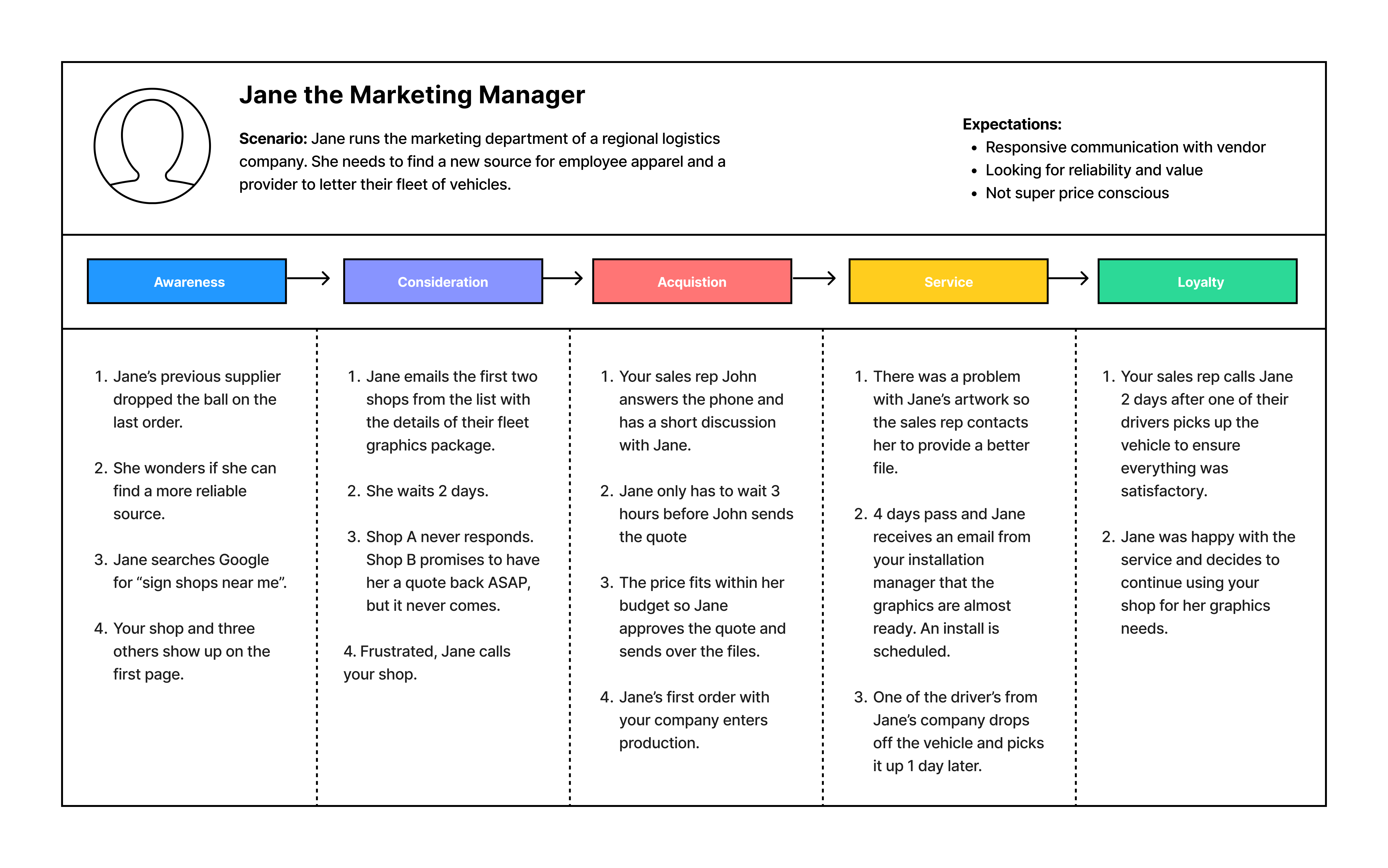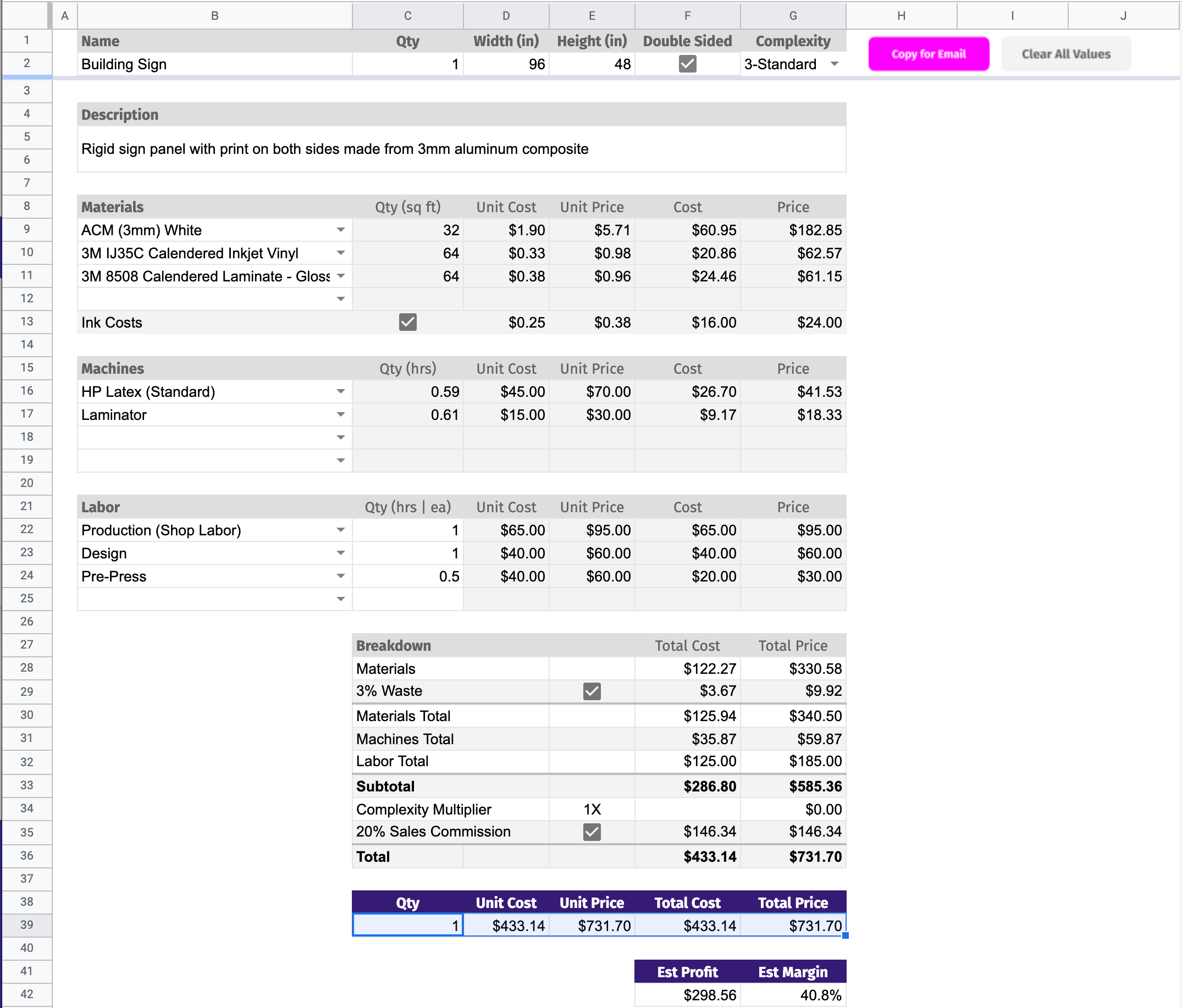The days of unwavering customer loyalty are gone. As small business owners we often think that customers do business with us because they like us. If there’s ever a problem with the service or end product we provide, surely they’ll come to us and let us know.
But unfortunately, most customers that have a poor experience just stop doing business with you – silently. And you may just be too busy to notice.
Here’s a few strategies to ensure you’re providing the best customer experience possible so your customers keep coming back again and again.
Understand what they are REALLY buying
This is the most important thing for you to understand, no matter what you’re selling.
Why are your customers buying from you?
Yes, they want signage or apparel or a vehicle wrap. But why? What are they using it for? What is their goal?
Chances are they’re not buying a custom sign because they just really like signs. They’re buying that pylon sign to attract more customers to their restaurant. They’re buying shirts to promote their brand. They are buying to achieve a certain outcome or goal.
What's the best way to gather this critical info? Just ask them.
They may not know the best product for what they are trying to achieve. So the next time a customer calls about a price for a 4ft x 8ft banner, dig a little deeper.
Here’s a few questions to get you started.
What’s the reason you’re interested in _____?
What do you plan on using the _____ for?
What are you trying to achieve?
Once you understand their reason behind the purchase, it makes delivering a killer outcome and experience ten times easier.
Remember – you’re the expert – so act like it. It’s on you to understand their needs and guide your customer to the best possible outcome.
Map your customer’s journey
Lots of shops will create process maps or SOPs for their own processes but they leave out the perspective of the customer. The best customers – your “A” customers – are just as busy as you are. Your goal is to make the process of buying from you as easy and painless as possible.
A customer journey map is just a visual representation of your customer’s entire buying experience with your company. It maps all the touchpoints and major events from the customer’s point of view.

You should map two states of your customer’s journey.
The current state – what journey does your customer take now
The ideal state – what does the journey look like ideally in the future
Lock yourself in your office. Pretend you know nothing about your shop. Now think through every step that a potential new customer has to go through just to complete an order with you.
Here’s a few common sticking points I’ve seen for quite a few print and sign shop clients.
How long does it take before you have a firm quote back into a new lead’s hands after they email you?
Do you trade 5-10 emails over 2 days just to get all the details on a job when a 10 minute phone call would have worked just as well?
Do they hear from 3 different people on your team just to complete an order?
Journey mapping is a helpful exercise in understanding where you’re falling short customer-wise. It’s also great for training and educating your entire team on the best way to deliver better results for your customers.
Educate your customers
I admit that teaching your customers everything about the process of making signs or printing shirts seems counterintuitive at first. Why show them behind the curtain? Or how the sausage is made? If I show them how it all works, won’t they just go do it themselves?
Don’t worry. They won’t. It’s actually going to lead to more business for you.
When you teach them everything you know – you’re actually doing two things.
Building trust with your customers by positioning yourself as the expert on your craft.
Making the process of ordering signs or print easier because they know more about how you work.
How do you educate them?
Video is highly effective and engaging so that’s the gold standard for educating your customers. But blog posts, case studies, and PDFs are also effective.
The easiest and most effective way to send your educational content is email marketing. For new leads and customers, you can create a drip onboarding campaign that includes a series of emails that educate them on the products you sell and the process of a successful order. For existing customers, a regular monthly email newsletter keeps you top of mind.
Here’s a few resources I recommend you create.
How it works guide on the entire ordering process from their perspective
Artwork guidelines on how to prepare and send artwork properly
Guides on the important details customers should know about a specific product you sell
For inspiration, Print My Threads of Ashland, KY does a great job of educating their customers on blog posts like this one – Know Your Print Styles.
Practice PRO-active communication
How would you rate your communication with your customers?
If you’re like most shops I work with and you’re feeling honest, you’re going to say something like “it definitely needs work” or “5 out of 10”. The good news is that you’re not alone. We can all do a better job of communicating with our customers.
Most shops I work with start out practicing reactive communication. They wait until their customer emails or calls them with the standard “Hey, where’s my order?”. The squeaky wheel gets the grease.
But if your customer is following up with YOU about the next steps for their quote or their order – then you have a problem. Think about Amazon. For one order, you receive a ton of proactive communication from them.
Your order is placed
Your order is set to ship
Your order has shipped
Your order is delivered
You never have to wonder what’s happening with your order. While you certainly don’t have Amazon’s technology budget, you can definitely start practicing proactive communication today.
Start by adding a “next steps” section to all your emails you’re currently sending to your customers. For example, when you send out a quote, write out the next couple steps after they approve the quote so they know exactly what to expect next. It’s easy to overlook because you know the process, but they may not.
When you practice proactive communication, you’re not only providing a better experience for customers, you’re saving time on customer service and reducing mistakes. When in doubt, err on the side of over-communicating. Your customers will appreciate it, I promise.

